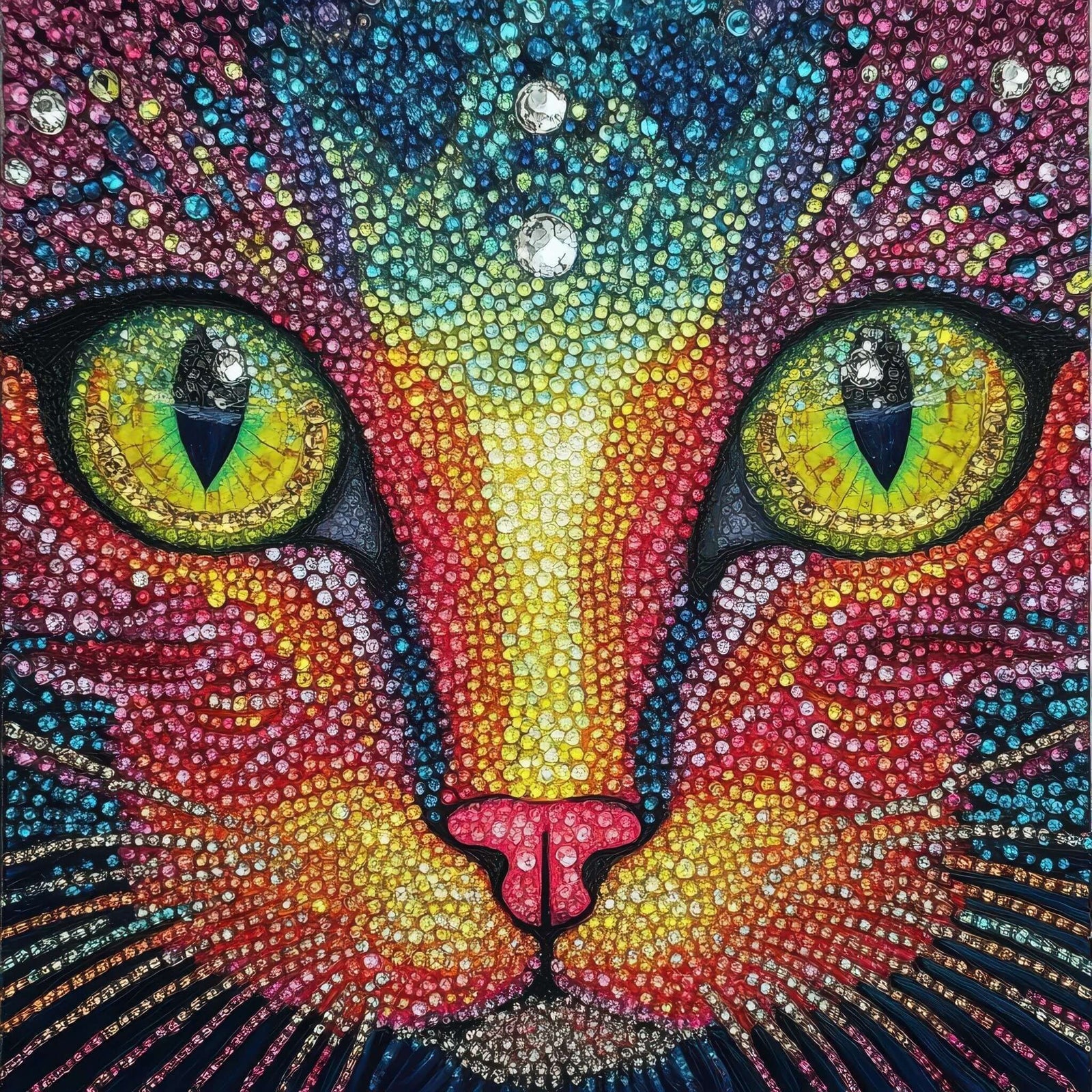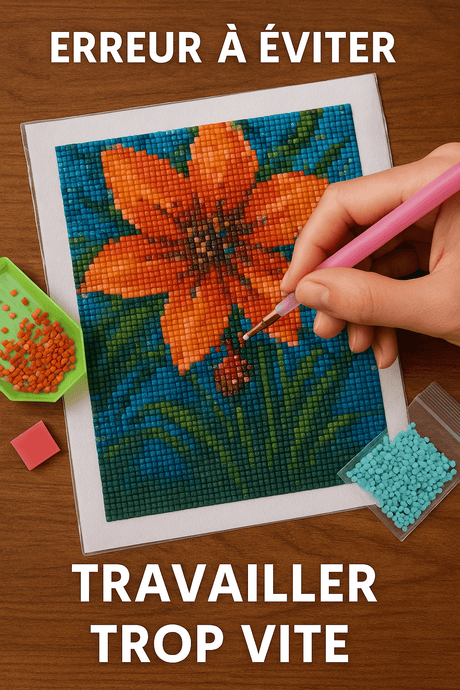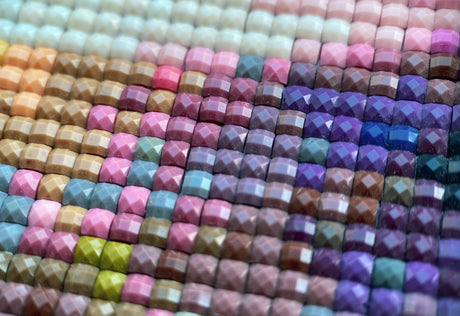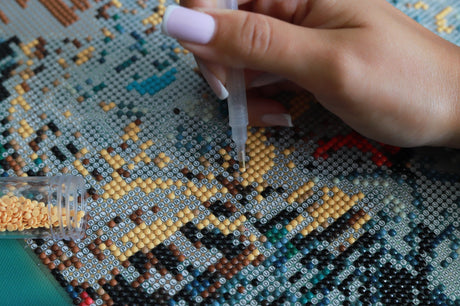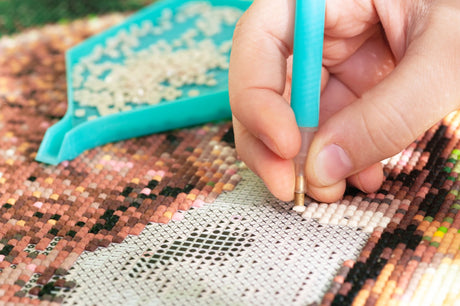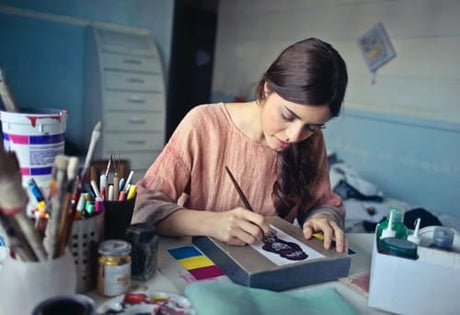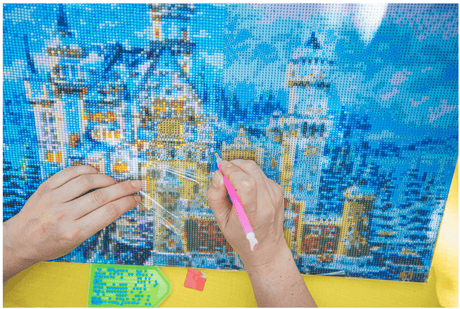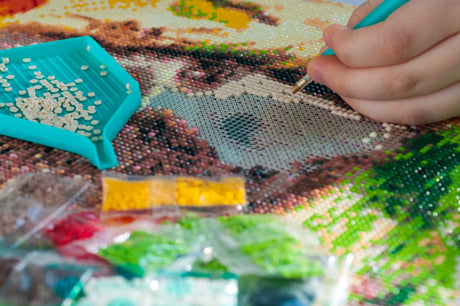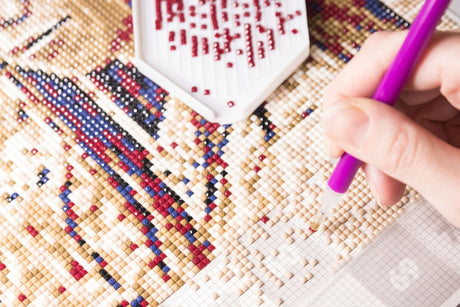The Diamond Painting, an art that combines painting by numbers and collage of rhinestones, has gained popularity in recent years. Not only does it offer a relaxing and fun activity, but it also allows you to create dazzling and personalized works of art. However, to preserve the quality and beauty of these creations, it is essential to learn to maintain them correctly. In this article, we offer a complete guide on how to preserve and maintain your Diamond Painting. You will discover practical advice on cleaning, storage and tips to keep the shine of colors as well as rhinestones. We will also approach the current errors to avoid to guarantee the longevity of your work. Whether you are a beginner amateur or a confirmed enthusiast, this guide will provide you with the information necessary to fully enjoy your Diamond Painting in the years to come.

How to preserve and maintain your Diamond Painting: Full Guide
The Diamond Painting, an art that combines painting by numbers and collage of rhinestones, has gained popularity in recent years. Not only does it offer a relaxing and fun activity, but it also allows you to create dazzling and personalized works of art. However, to preserve the quality and beauty of these creations, it is essential to learn to maintain them correctly. In this article, we offer a complete guide on how to preserve and maintain your Diamond Painting. You will discover practical advice on cleaning, storage and tips to keep the shine of colors as well as rhinestones. We will also approach the current errors to avoid to guarantee the longevity of your work. Whether you are a beginner amateur or a confirmed enthusiast, this guide will provide you with the information necessary to fully enjoy your Diamond Painting in the years to come.
Understanding Diamond Painting: necessary techniques and materials
Before diving into the maintenance of your Diamond Painting, it is essential to understand the basic techniques and the necessary materials. Diamond Painting is to stick rhinestones (or "diamonds") on a pre-printed adhesive canvas, following a diagram of numbers. These rhinestones can vary in shape, color and size, and are generally made from resin or acrylic. The choice of the quality of the materials is crucial, because it will influence not only the appearance of your project, but also its durability.
Different types of rhinestones
There are mainly two types of rhinestones used in Diamond Painting : round rhinestones and square rhinestones. The round rhinestones are often preferred by beginners because of their ease of application, while the square rhinestones offer a smoother and more compact finish, ideal for experienced artists. The choice depends on your skill level and the desired visual effect.
Essential tools
To make your Diamond Painting, you will need some accessories Essentials: tweezers, a rhinestone stylus, and a tray to organize the rhinestones. Each of these tools plays a key role in the creation process, facilitating precise collage of the rhinestones and improving your work experience.
Collage techniques
The collage technique is also crucial. It is recommended to work in sections, by sticking a small area at a time. This not only keeps the adhesive clean, but also to prevent the rhinestones from losing their shine. In addition, by ensuring that each rhinestone is properly positioned, you guarantee a quality final rendering.
Preparation of your workspace: practical advice

Preparation of your workspace is an often overlooked step in the creation of Diamond Painting, but it is essential to guarantee a pleasant and effective experience. An appropriate environment can improve not only your comfort, but also the quality of your work.
Choose a well lit table, preferably with natural light. LED lamps with soft lighting can also be effective. Guaranteeing good visibility allows you to better distinguish the different rhinestones and minimize errors.
Also make sure you have enough space to extend your canvas and your materials. A cluttered office can make the process of applying the frustrating rhinestones. Finally, remember to bring a comfortable chair to avoid any fatigue during long creation sessions.
Also remember to keep your space clean. Regularly get rid of debris or rhinestones that have fallen to avoid accidents. A well -organized space facilitates travel and contributes to a good state of mind during creation.
Damage prevention: how to protect your works
After creating your Diamond Painting, the next step is to ensure that it is well protected against potential damage. The way you display and store your work will play a crucial role in its longevity.
First of all, avoid exposing your work to direct sunlight, as this can lead to a discoloration of the rhinestones over time. It is also essential to maintain a stable temperature in the room where you keep your Diamond Painting. Variations in temperature and humidity can affect the grip of the rhinestones.
Remember to supervise your work. A frame not only protects the diamond painting from dust and dirt, but it also prevents accidents, such as falls. Choose a frame that is not in direct contact with the surface of your work to avoid altering the rhinestones.
Finally, avoid manipulating your diamond painting too often. Even if you are proud of your creation, it is better to leave it in its place once you have exposed it.
Current errors to avoid during the process
By creating a Diamond Painting, it is easy to make mistakes, especially if you start. By being aware of some of the most common errors, you can avoid future frustrations.
One of the major errors is to neglect the preparation of the canvas. Make sure it is completely flat before you start. A crumpled or rolled canvas can harm the application of the rhinestones and cause irregularities in the final design.
Another current error is to work in a badly lit place. Adequate lighting is crucial to distinguish the colors from the rhinestones and avoid errors in the placement. This also guarantees that you can see potential imperfections before they become a problem.
In addition, not following the pre-printed model is another frequent error. This can not only lead to visual inconsistencies, but also create a disorderly aspect that could spoil the overall appearance of your work. Take the time to work methodically, section by section.
Best maintenance practices after creation
After finishing your Diamond Painting, it is important to set up maintenance practices to preserve its beauty and sustainability. The first step is to ensure delicate cleaning. Use a soft cloth to remove any accumulated dust and avoid the use of aggressive chemicals that could damage the rhinestones.
Regarding storage, be sure to keep your work in a dry place and out of direct light. A frame can also help protect the rhinestones from physical shocks. Some people choose to use fabric protective covers for more security.
Finally, it is recommended to regularly check your Diamond Painting to ensure that the rhinestones have not moved or have not fallen. By carrying out minor adjustments as soon as necessary, you can extend the beauty of your creation.
In summary, preserve and maintain your Diamond Painting requires both efforts and care. By following these practical steps and advice, you will not only guarantee the longevity of your work, but you can also continue to appreciate the beauty and the hard work you have invested in it.

